A stay at this Japanese hotel will nurture your mind and spirit
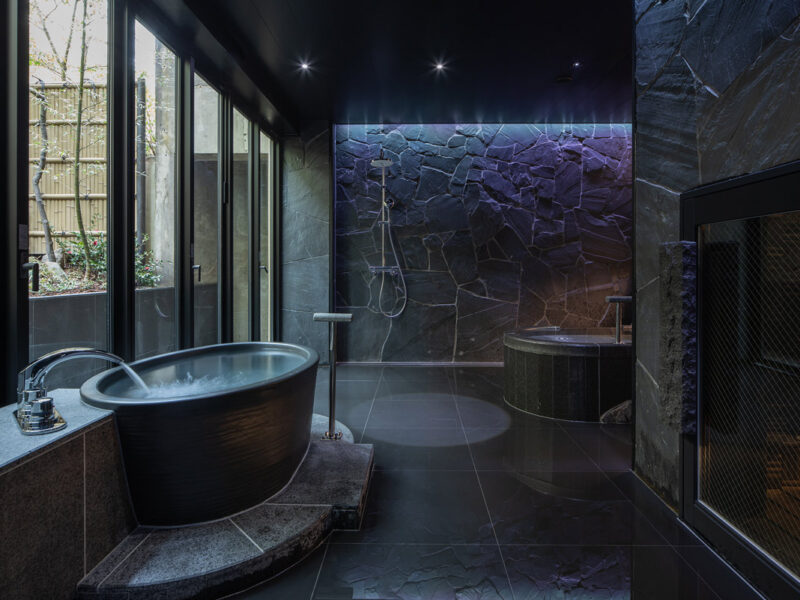
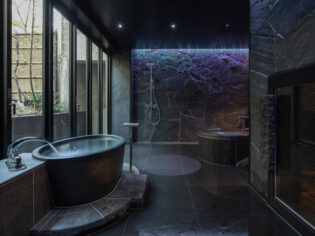
Find serenity and a luxurious reset. (Image: Blitz Studio Co.)
In a traditional inn at the foot of a sacred mountain, find serenity and a luxurious reset on the outskirts of Kyoto.
Grey gravel paths crunch underfoot as I follow their curves through a garden carpeted in moss. I walk past spongy mounds, stone walls and pagodas encrusted with green growth, huddled bushes and grand trees. Little wooden bridges with handrails of bamboo cross over a pond studded with rocks. Fed by a stream diverted from a nearby river, it’s brought alive by pockets of gold and dappled koi gifted from monks who reside in the nearby hills.
It’s between seasons, so while birdsong fills the air, the trees are largely bereft of leaves. Still, the garden is a work of beauty, serene and carefully planned as if to appear nonchalant, with pockets of loveliness hiding around corners.
Ancient traditions
I’m on the north-eastern outskirts of Kyoto, a 20-minute drive from the city, ensconced at a peaceful riverside hotel called Moksa. As the rampant moss suggests, its garden was here long before this modern ryokan was built, a recent reinvention of the previous building. It’s in the village of Yase, which lies at the base of one of two sacred mountains that gave birth to Japanese Buddhism – a village that is rumoured to boast one of the oldest steam bath cultures in Japan.
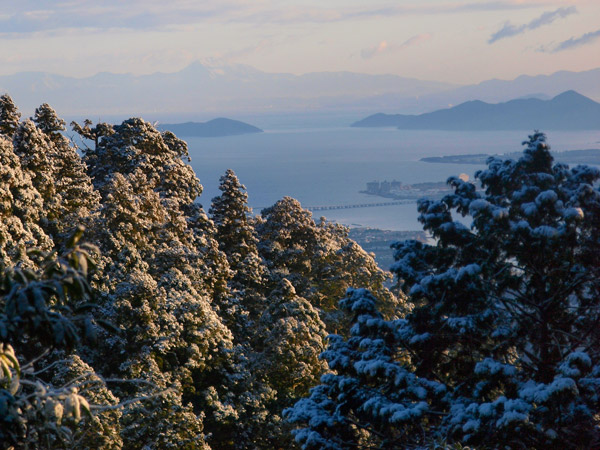
Soak up the sunrise over Lake Biwa from Mt Hiei. (Image: Tsuyoshi_Kaneko via Getty Images)
Since ancient times, the villagers have used a steam sauna called kamaburo, a rounded earthen kiln, to cure various ailments. It’s said that when a prince was wounded by an arrow in 672AD during the Jinshin War, the villagers offered him a kamaburo bath to heal his back. That prince went on to become the revered Emperor Tenmu, clear evidence the proffered remedy was successful. The area has been favoured since by aristocrats and samurai as a place of healing for body and mind, and today Moksa continues that history.
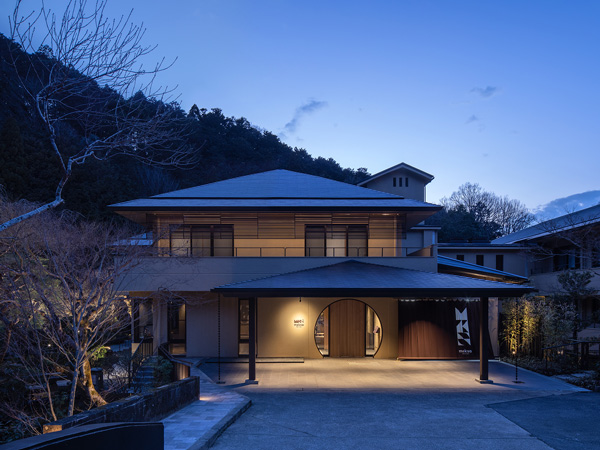
A stay at Moksa, which is surrounded by forest, is all about temples and nature. (Image: Blitz Studio Co.)
The hotel
I’d imagined ryokans to be small spaces, but Moksa ends that preconception. The oversized foyer is a feast of earthy tones and textures – blond timbers, slabs of natural stone and clean lines.
It showcases the works of local artisans: sculptures from twisted vines, abstract paintings and stone artworks. Throughout, massive windows frame the magic of the garden, which is well worth displaying.
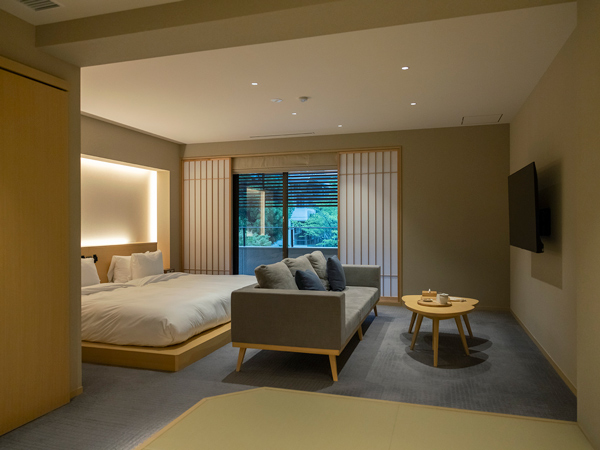
Moksa offers 31 guestrooms surrounded by the nature of Yase in the north of Kyoto. (Image: Blitz Studio Co.)
The rooms are equally delightful and my Deluxe Twin Room surprises with its spaciousness. Japanese snippets – ceramic tea sets and his-and-hers pyjamas folded neatly at the foot of the beds – are offset with a thoroughly modern vibe. Simple and elegant, it features a separate bedroom, both a sofa and coffee table, a traditional tatami lounge and a large charcoal-tiled bathroom. The translucent shoji paper screen slides across to reveal a balcony running the length of the room that peers over that same garden, while others overlook the Takano River.

Wash away the cares of modern life at Moksa. (Image: Blitz Studio Co.)
Taking its name from the Sanskrit word moksha, which means ‘liberation from earthly care’, the hotel promises a rebirth for those who stay. It’s not just the surroundings designed to provide a reset. Three key elements combine to nurture mind and spirit: nourishment from food, purification from private steam baths and a variety of tea traditions to stimulate the circulation of qi energy.
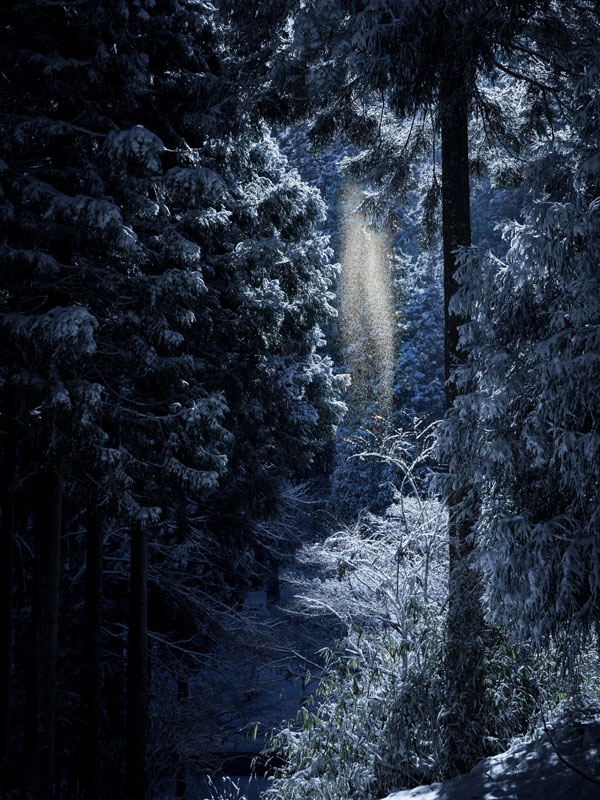
The name derives from a Sanskrit word meaning ‘liberation from earthly care’. (Image: Amana Images Inc./ Alamy)
Dining
With cuisine integral to the Moksa experience, breakfasts and dinners are part of any stay. The philosophy of being nourished through food is celebrated at Malamakibi, its restaurant featuring vegetables and herbs from the nearby village of Ohara.
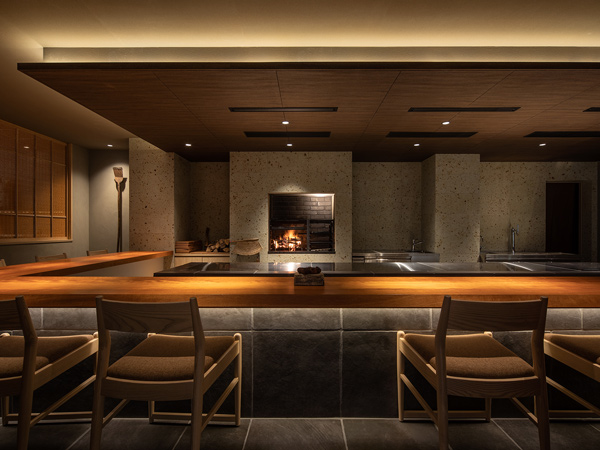
Malamakibi restaurant specialises in woodfired cuisine sourced from Ohara. (Image: Blitz Studio Co.)
It’s a treat to sit gazing directly into the kitchen and watch the chef and sous chef assiduously prepare the ingredients for dinner before us and grill them over woodfired coals. He also presents the dishes and explains their components. The meals are exquisite: everything from the flavours to the ingredients, attention to detail in presentation and the plates on which they’re served. Seafood features highly, each course of six an exercise in beauty and precision, ingredients matched to the turning season: sea urchin, cherry salmon, snippets of canola flower and butterbur sprout.
We finish at the bar with fresh strawberries, a macaron and a sliver of nutty tart washed down with the hotel’s signature smoked tea gin and tonic. It’s perfect.
Breakfast is equally finessed, with Japanese and Western choices including a ‘healing breakfast’ with rice porridge and five-coloured side dishes inspired by the five elements of yin-yang. Everything has a reason.
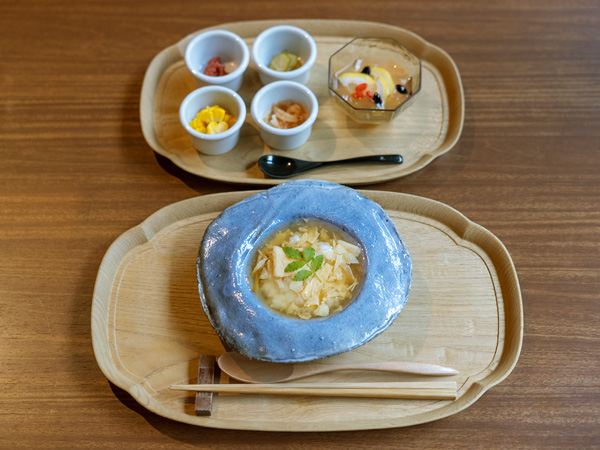
Enjoy elevated in-house dining at Moksa. (Image: Blitz Studio Co.)
The saunas
Drawing inspiration from the local history and using the groundwater from Mt Hiei, Moksa offers three uniquely themed sauna and spa rooms designed for wellness and rejuvenation, available for private 90-minute sessions. Not being a great decision-maker, I try them all.
Each suite is beautifully appointed. Hijo is themed around Japanese cypress, considered sacred, with timber tubs and a scent of pine. A pink and taupe Bijo mist sauna features a special light to activate collagen in the body. Tanjo is all blacks and inky greys with deep, dark tubs and a private bamboo courtyard garden that glows at night.
I’m grateful for the fresh berries and cold drinks provided because, unsurprisingly, it’s hot in the saunas. Very hot. I’m told sauna steamers build up heat resilience, but I’m mindful of my untrained state and opt for a shorter sauna and a longer water bath soak to compensate. A cold tub provides the option of an invigorating post-sauna dip, said to increase lymphatic circulation, but I like my water warm and have no wounds to heal so I skip that part without regret and still feel thoroughly cleansed.
Tea culture
We’re offered tea at the Kikyorai tea counter to rejuvenate mind and body. In a Taiwanese ritual, a choice of blends is presented, each with a healing purpose, served deftly with contemporary tea utensils and ceramics crafted by artisans. It’s time to slow down and savour the detail.
Another tea ceremony awaits in the garden in a 100-year-old freestanding teahouse, lovingly restored in recent years. Inside, we’re privileged to be hosted by an octogenarian tea master, a sensei who’s been studying and teaching the art of the tea ceremony for more than 50 years. Dressed in a blush-pink kimono embroidered with sakura blossoms, Moriya Michiko explains her considered actions and their intent, from the turn of the bowl to the wipe of silk and the swish of the split-bamboo whisk.
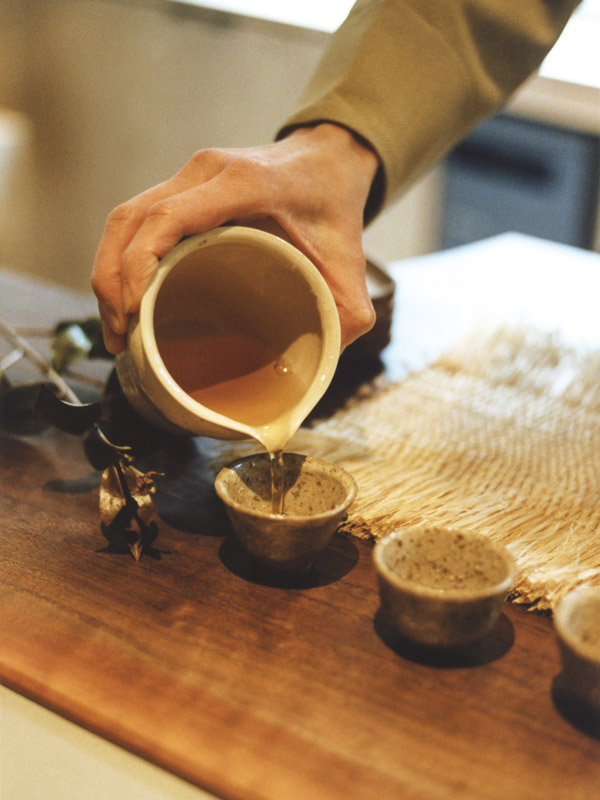
The food at Malamakibi restaurant is paired with tea, a nod to the teahouses that have welcomed travellers since ancient times. (Image: Blitz Studio Co.)
Beyond Moksa
There’s more to soothe the soul beyond the gates of Moksa, with forests to wander, a village to explore, shrines to visit and a mountain to hike. Mt Hiei, considered one of the three holiest places in Japan, is the home of heritage-listed Enryaku-ji Temple (that’s the collective name for the hundred-plus temple halls scattered on the mountain), founded in 788AD.
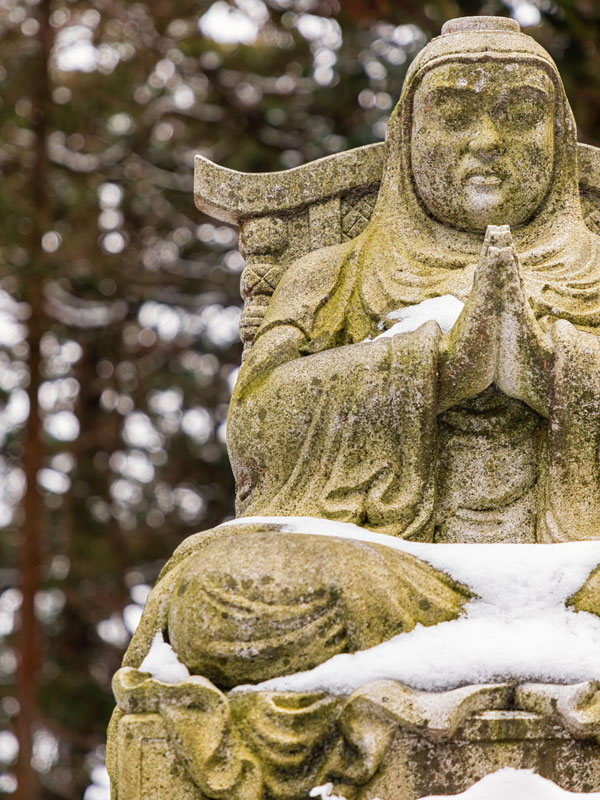
Priest Saicho was a Japanese Buddhist monk who established the Tendai sect of Buddhism in Japan. (Image: Alec Gibson/Alamy)
A cable car from Yase-Hieizan-guchi Station can deliver you to the top but timing is key as it closes in winter. Otherwise, it’s a long but peaceful walk.

Visit Hokke Soji-in east hall at Enryaku-ji Temple. (Image: Amana Images Inc./ Alamy)
I’m learning the importance of timing. My mid-season visit also means the grounds of the Ruriko-in Temple in Yase – where the original kiln bath that cured an emperor can still be seen – won’t open either until a few weeks’ time in spring.
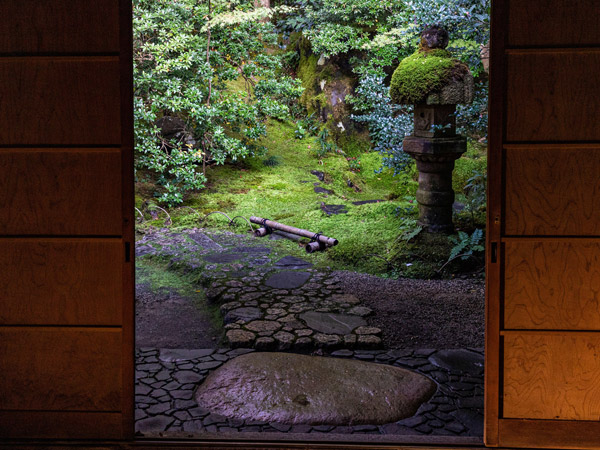
Rurikoin in Yase, Kyoto, has been attracting people since ancient times. (Image: John Lander/ Alamy)
Regardless, I’ve bathed in steam and water and forests, sipped teas and been pampered with food, and witnessed the beauty of nature in refined surrounds. It seems ancient traditions are still providing salves for our modern lives.
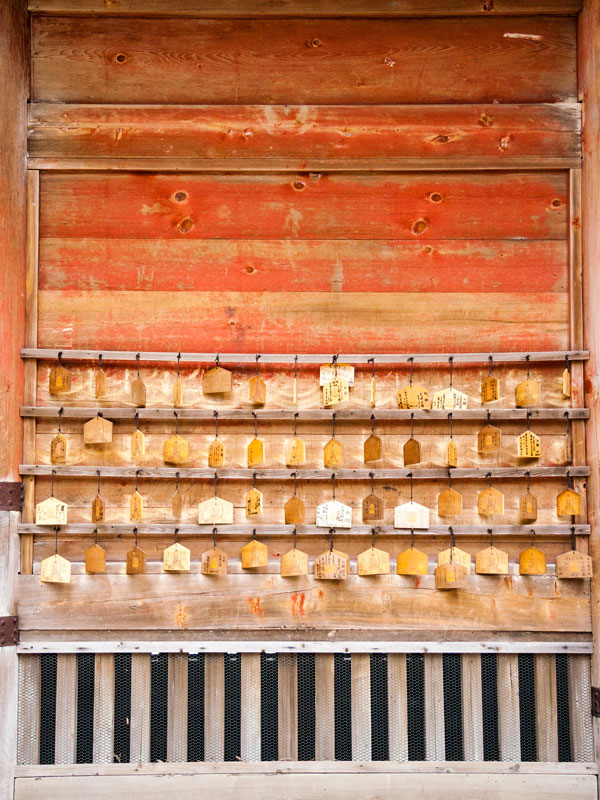
Ema prayer boards hanging on the Monju-ro gate at Enryaku-ji Temple in Kyoto. (Image: Malcolm Fairman/Alamy)
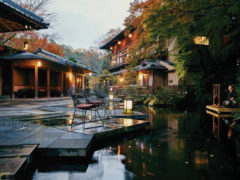
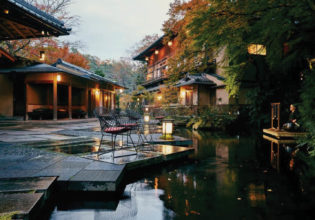
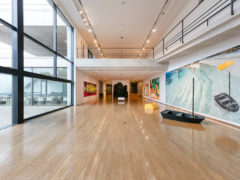
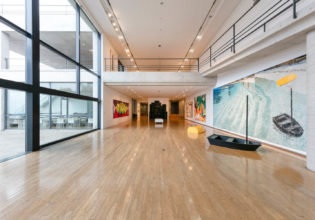
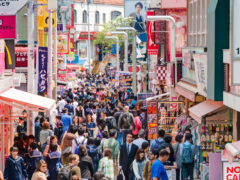
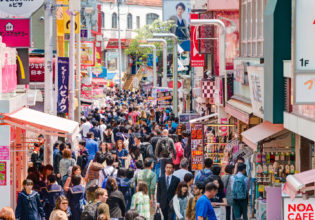
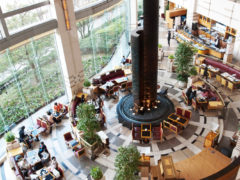
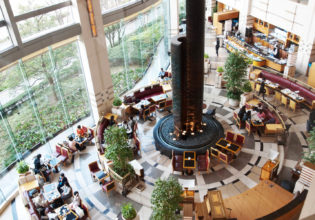
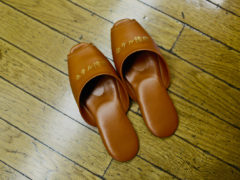
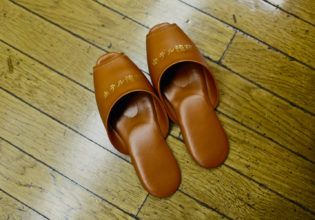
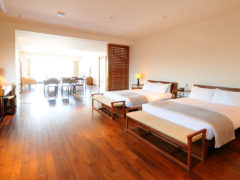
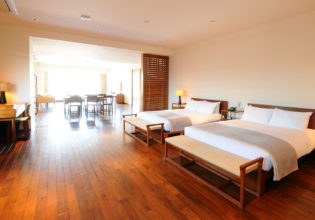

As a person who loves travel I enjoy most of your articles, but this was one of the very best, thank you for sharing